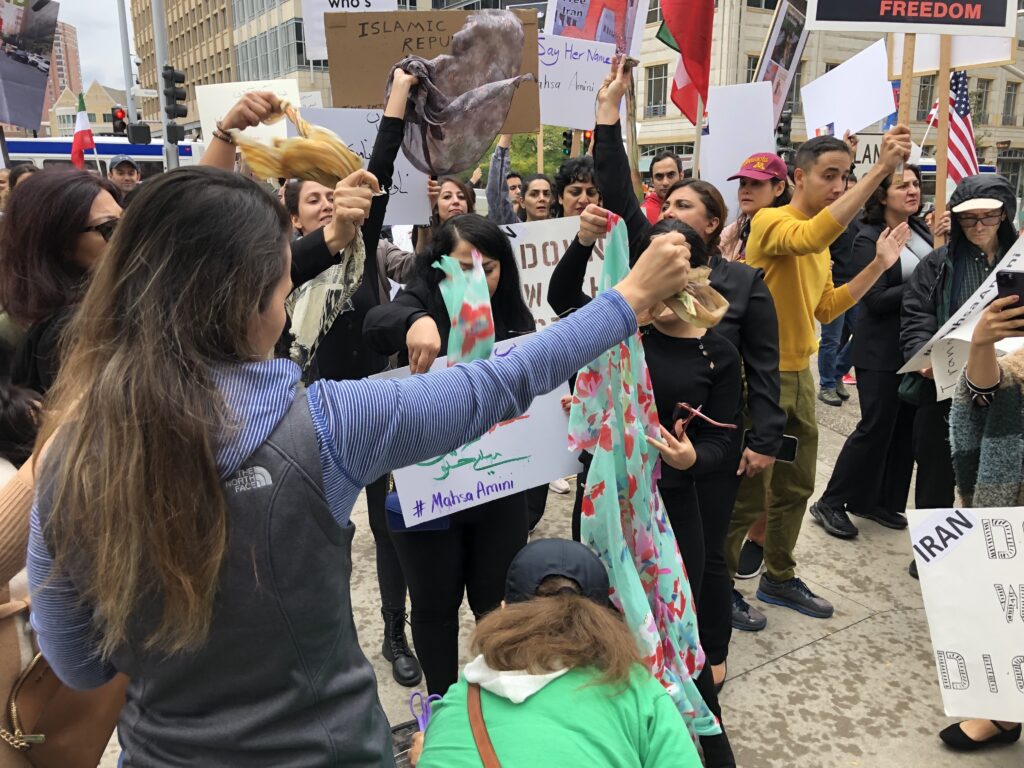Minnesota’s Iranian-American community protests for change in home country
[anvplayer video=”5137185″ station=”998122″]
There were voices of protest in downtown Minneapolis Saturday.
The concern — about what’s happening in a country halfway around the world.
“Today I’m here because I see all these innocent people getting killed in Iran,” declared Sahva Neymand, who moved from there to Minnesota six years ago. “This is the least I can do for them, to let the whole world know what’s going on.”
Dozens of people from the metro’s Iranian-American community — some here for decades, others arriving just months ago — took to the streets, following the death of 22-year-old Mahsa Amini.
“That became a lightning rod for the massive protests in Iran,” says Pirham Alaei, with the Minnesota Committee in Support of a Democratic Iran. “They’re having protests in all provinces across the country.”
Amini died in custody of the country’s so-called Morality Police, after she was arrested for wearing a headscarf “improperly” — with some hair showing.
Dozens of people from the metro’s Iranian-American community — some here for decades, others arriving just months ago — took to the streets, following the death of 22-year-old Mahsa Amini.
“It is just so unbelievable how there is a chance, a possibility you could get killed if just this much of your hair is showing up,” Neymand says.
Edited footage released by Iranian authorities on Sept. 16 allegedly shows Amini in custody, walking up to someone, then collapsing, and later taken to an ambulance.
Iranian officials say the 22-year-old suffered a heart attack from a previous health condition.
But Amini’s family — and some protesters — say she was struck in the head during her Sept. 13 arrest.
“She was in custody, she was beaten in custody, and she died two days later at the hospital,” Alaei says.
Under Iranian law, women are required to cover their hear with a headscarf, also known as a hijab.
They are also supposed to wear long, loose-fitting clothing to disguise their figures.
Kimia Kowsari was among the women at the Minneapolis protest who simulated the burning of their hijabs — or cut their hair in protest.
“I was born and raised here, but both of my parents are from Iran, and they moved here at the age of thirty,” she says. “Cutting my hair is a way to connect to them, the women of my age in Iran who are going to prison, who are going to jail, dying for this. To let them know that I am with them.”
Meanwhile, in Iran, there are reports that at least thirty protesters — and perhaps many more — have been killed in clashes with police.
ABC News reports authorities there are threatening those who protest — and are also restricting internet access.
That’s a concern to Alaei.
“The Iranian regime has cut internet off now, so anything we can do from the U.S. side to provide internet, that helps greatly,” he explains. “Right now we cannot talk to our family because of restrictions with WhatsApp and Instagram and so forth.”
But help may be on the way.
The Treasury Department says it’s lifting some sanctions against Iran, allowing tech companies to offer secure platforms and services there.
That includes the export of satellite internet equipment as well.
The protesters say what’s happening in Iran is personal — because many still have family there.
Alaei estimates the Iranian-American community in Minnesota numbers between 3,000 and 4,000 people.
Neymand says she feels deeply about Amini’s fate — and hopes for justice.
“She was a very ordinary, regular human being like me, like my sister, like all my female friends in Iran,” she says quietly. “Her dying because of a hijab was something that was out of place.”
Now — the White House is calling for the Iranian government to end the persecution of women, and allow peaceful protest on the streets.
Kowsari says she hopes changes are coming to Iran.
“We’ve had smaller protests in the past, but this is the big one,” she says. “I think people are fed up now for real, and I think now is the time we can make change.”
